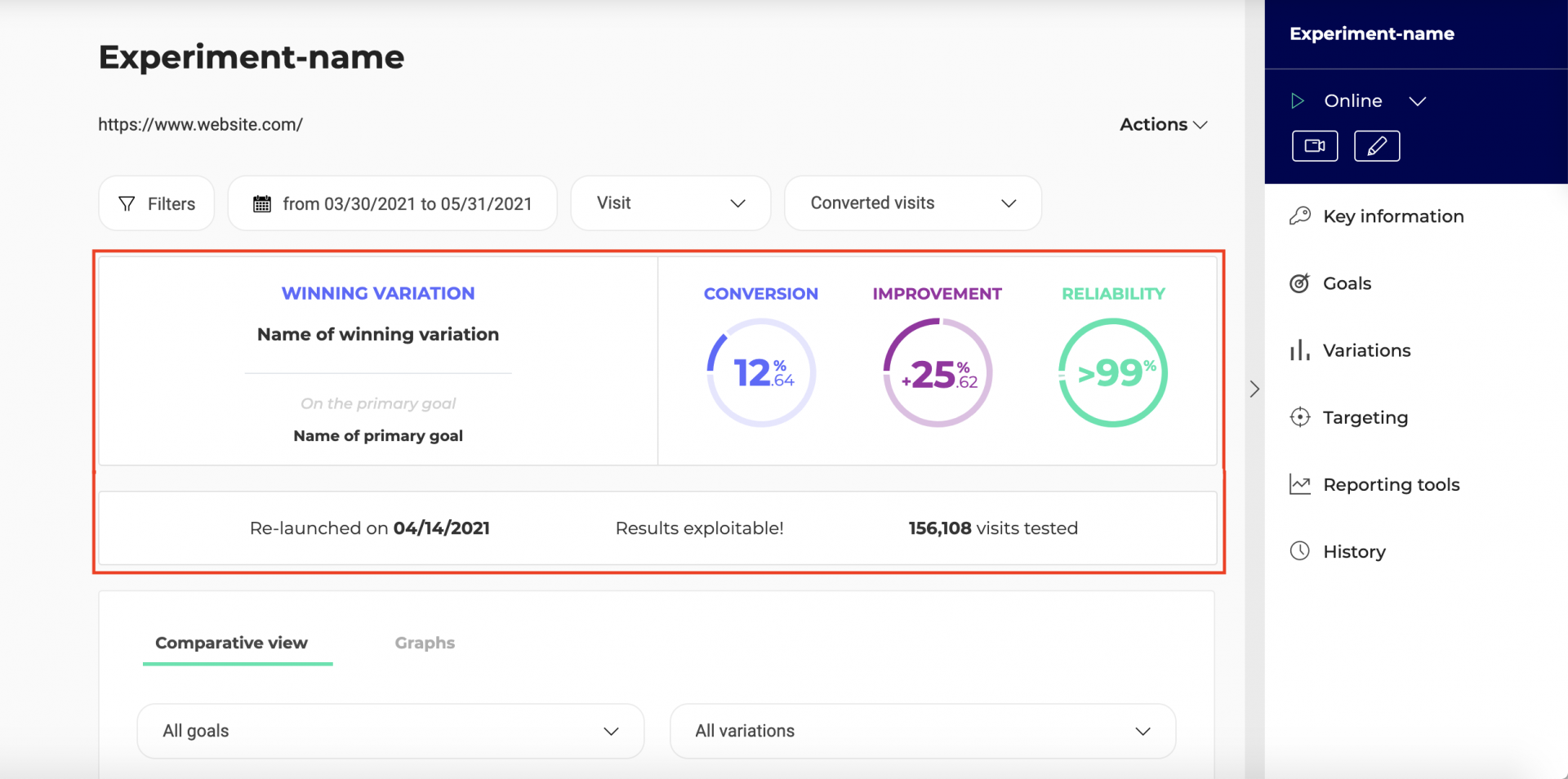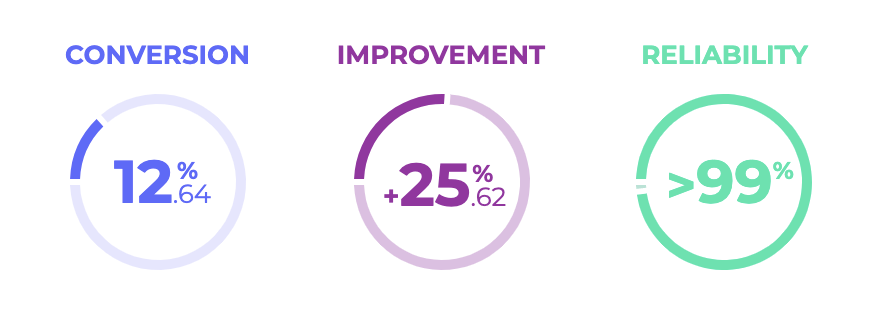A new campaign results page is available! Discover its features
At the top of the results page is the main results of your experiment.

You will be able to see at a glance which variant of your experiment is considered a winner.
The information displayed here depends on the results and progress of your experiment. You may encounter four different situations:
- It is too early to exploit the results;
- A variation is winning;
- A variation is recommended;
- The original variation is the recommended one.
The selection of a recommended variation is based on the variation’s conversion rate on your primary goal, and its improvement and reliability rates computed using the numbers from the converted visits / visitors view.
Variation and primary goal

It’s too early to exploit the results
When the results are not enough to draw conclusions, a message informs you:

In this case, we advise you to wait until the data is sufficient to exploit the results.
Note: In the “Actions” menu of the results page, you can define an alert that will inform you by e-mail as soon as the results of your experiment are reliable. Check out our article Actions on the results page to learn how to set up an alert.
A variation is winning
On the left of the main results block is the name of the winning variation and the name of the primary goal (the goal for which the variation is winning).

When a variation outperforms on the primary goal and its reliability rate is sufficient, then it is considered as winning for the primary goal.
To be considered a winner, a variation must:
- Be the best performing variation on the primary goal;
- Have a reliability rate higher than the minimum set.
By default, a “reliable” variation is a variation whose reliability rate is greater than 95%. Nevertheless, you can change this rate by going to the Configuration page of your website (“Experiment” tab).

A variation is recommended
When the variation having the best improvement rate on the primary goal has an insufficient reliability rate, another variation is then recommended.

The recommended variation is the one offering the best improvement rate among the reliable variations.
By default, a “reliable” variation is a variation whose reliability rate is higher than 95% (you can change this rate by going to the configuration page of your site).
Example:
Your experiment has 3 variations:
- Variation 1 (improvement 23%, reliability 50%);
- Variation 2 (18% improvement, 90% reliability);
- Variation 3 (7% improvement, 90% reliability).
Variation 1, while being the best performer, can not be considered a winner because its reliability rate is too low. The recommended variation is then the variation which, among those with a sufficient reliability rate, offers the best improvement rate: variation 2.
The winning or recommended variation is the original
When none of the variations with a higher conversion rate than the original has a sufficient reliability rate, the original variation is a winner or recommended.


In this case, the improvement rate and the reliability rate are not measured on the original, only the conversion rate is indicated.
In this part of the main results block, you will also find a reminder if filters or date ranges are applied to your results page, as they may change the results.

Main results of the variation

In the center of the main results block, the key results of the winning or recommended variation are displayed.
From left to right you will find:
- The conversion rate of the variation on the primary goal;
- The improvement rate according to the original variation;
- The reliability rate of the variation.
You will find the details of the results in the results table, further down the page.
Experiment information

In any case you will find, on the right of the block of the main results, two informations about your experiment:
- Its launch date;
- The number of visits/visitors tested.
Opportunity detection

When this icon appear, it means that Kameleoon has found uplift opportunities on your variations that could appeal to a portion of your audience.
To find out more about opportunity detection, please read this article.
